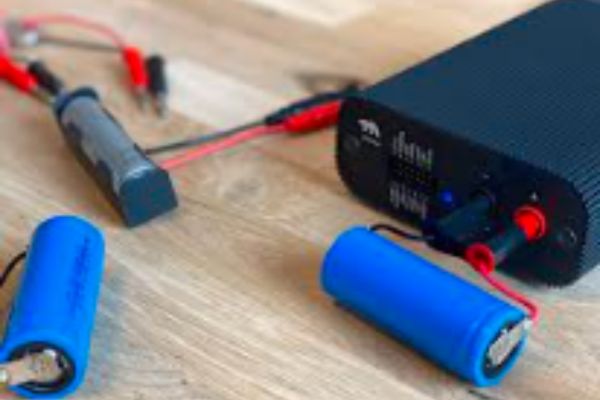The global IoT battery market size is valued at USD 11.28 billion in 2024 and is predicted to attain around USD 28.72 billion by 2034 with a solid CAGR of 9.80%.

IoT Battery Market Key Points
- North America holds the largest share in the market, accounting for 39%.
- Asia Pacific is expected to register a significant CAGR during the forecast period.
- By type, the chemical batteries segment dominates the market.
- By treatment, the interpersonal psychotherapy segment leads the market.
- By rechargeability, the primary batteries segment is projected to gain a significant market share over the forecast period.
How AI is Revolutionizing IoT Battery Performance
AI plays a crucial role in optimizing battery performance in Internet of Things (IoT) devices. It helps extend battery life by analysing usage patterns and adjusting power consumption in real-time, ensuring efficient operation. AI also enhances smart charging management by learning optimal charging cycles, preventing overcharging, and boosting battery lifespan. Additionally, AI-driven predictive maintenance monitors battery health, enabling proactive replacements before failures occur, reducing downtime and enhancing device reliability.
Furthermore, AI improves energy management across IoT networks by analyzing data from multiple devices and optimizing power consumption. It aids in battery design by optimizing energy density and charging times, while also predicting battery performance under varying conditions. These advancements lead to smarter, more sustainable batteries for IoT applications, ensuring devices operate longer and more efficiently.
Market Scope
| Report Coverage | Details |
| Market Size by 2034 | USD 28.72 Billion |
| Market Size in 2024 | USD 11.28 Billion |
| Market Size in 2025 | USD 12.38 Billion |
| Market Growth Rate from 2025 to 2034 | CAGR of 9.80% |
| Largest Market | North America |
| Base Year | 2024 |
| Forecast Period | 2025 to 2034 |
| Segments Covered | Type, Rechargeability, Application, and Regions |
| Regions Covered | North America, Europe, Asia-Pacific, Latin America and Middle East & Africa |
Market Dynamics
Market Drivers
The primary driver of the IoT battery market is the rising number of IoT applications that require efficient and long-lasting power solutions. Industries like healthcare, manufacturing, and smart homes rely heavily on IoT devices that must operate for extended periods without downtime. Moreover, advancements in battery technology, including the development of low-power and high-capacity batteries, are contributing to the growth of the market.
The growing trend toward wireless IoT networks, smart cities, and automation is also fostering demand for batteries that can power a multitude of interconnected devices without frequent recharging.
Market Opportunities
There are significant opportunities in the IoT battery market, especially in sectors such as healthcare, automotive, and logistics. In healthcare, wearable devices and remote patient monitoring systems are driving demand for small, reliable, and efficient batteries. In the automotive industry, IoT-powered electric vehicles (EVs) and autonomous vehicles offer substantial growth potential.
Furthermore, the rise of smart cities and infrastructure projects presents opportunities for battery solutions in smart meters, connected streetlights, and environmental monitoring devices. Emerging technologies such as 5G networks are expected to further boost the demand for IoT devices and, in turn, specialized batteries.
Market Challenges
Despite the promising growth, the IoT battery market faces several challenges. One of the main obstacles is the high cost of advanced battery technologies, which can limit their widespread adoption, particularly in low-cost consumer devices. The limited lifespan of current batteries in certain applications, such as IoT sensors, is another issue, as these devices need frequent maintenance and battery replacements.
Additionally, the variation in power requirements for different IoT devices adds complexity to battery design and performance, necessitating customized solutions. The environmental impact of battery disposal and recycling also poses a challenge for sustainability in the industry.
Regional Insights
North America dominated the market with the largest market share of 39%, driven by significant investments in IoT infrastructure, especially in sectors like healthcare, automotive, and smart homes. The United States is at the forefront of technological innovation and the development of IoT devices, contributing to the market’s growth. Europe is also witnessing strong growth, fuelled by advancements in smart city projects and the increasing adoption of IoT in various industries.
In the Asia Pacific region, rapid industrialization, the expansion of the consumer electronics sector, and the growing adoption of smart technologies are driving the demand for IoT batteries. The market in this region is expected to experience the highest growth due to the rising number of IoT applications and the presence of key battery manufacturers.
IoT Battery Market Companies
- Panasonic Corporation
- Duracell Inc
- LG Chem Ltd
- STMicroelectronics N.V
- Ultralife corporation
- Samsung SDI Co
- Cymbet Corporation
- Enfucell OY
- Rocket Electric Co. Ltd
- AFT Groupe SA
Segments covered in the report
By Type
- Chemical Batteries
- Lithium Batteries
- Alkaline Batteries
- Others
- Thin-film Batteries
- Printed Batteries
- Solid-state Chip Batteries
By Rechargeability
- Primary Batteries
- Secondary Batteries
By Application
- Wearable Devices
- Consumer Electronics
- Healthcare
- Home Automation
- Retail
- Banking, Financial Services, and Insurance (BFSI)
- Aerospace & Defense
- Industrial
- Agriculture
- Smart Packaging













